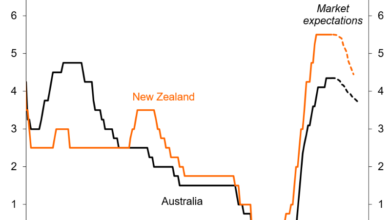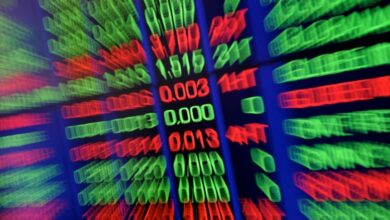Women are the secret to unlocking Australia’s economic success

Women’s economic inequality is a critical issue that’s holding our whole country back. Women are often unpaid, underpaid, or underutilised in our economy due to circumstances – which calls for new solutions to the barriers preventing economic participation by ALL Australian women.
Unlocking the full potential of our nation relies on dismantling all, or at least most of the barriers that hinder women’s economic participation – and resolving them so that economic security can be a tangible reality for Australian women irrespective of their current reality.
The recent Women’s Economic Equality Taskforce Report quantified the cost of gender inequality – a staggering $128 billion boost to the Australian economy by eliminating persistent and pervasive barriers to women’s full and equal participation. And recently the World Economic Forum showed us that Australia is falling behind with our participation ranking dropping from 12th to 38th in 2022 – claiming if we could halve the gap between male and female workforce participation rates, we could deliver $140 billion in benefits to Australian households over 20 years.
The urgency to address these challenges now needs collective action that both solves for the multitude of barriers women face, alongside changing the systems and structures that prohibit them.
For the last 10 years at Global Sisters, I have made it my mission to support women – helping them to remove barriers to economic participation, so they can generate income flexibly, irrespective of their circumstances. We’ve supported over 6,000 women, providing them with flexible and accessible micro business development support, free of charge. This support has contributed to their financial independence and, in many cases, has been a lifeline out of otherwise unattainable financial situations.
The significance of women’s entrepreneurship in driving economic growth cannot be underestimated. Currently, only 22 per cent of Australian startups are founded by women. The Women’s Economic Equality Taskforce Report indicates that bridging this gap could inject between $71 billion and $135 billion into the Australian economy. Entrepreneurship, particularly through micro-businesses, offers a flexible alternative for women to participate in the economy, providing income generation, job creation, and a pathway towards economic security.
However, to achieve economic security at scale, we cannot continue to work a one woman-at-a-time model alone. We must confront gender inequality ingrained in our systems and structures. We need to meaningfully address the most critical issues and inequalities facing significant cohorts of Australian women and their children: poverty, domestic and family violence, women’s mental health and wellbeing, and women’s housing insecurity and homelessness. Our approach to this focuses on four interconnected systems change interventions for long-term economic security: Welfare reform for women’s self-employment; pro women’s micro business policy and investment; women’s financial product and services pathways and access to home ownership for women.
The Women’s Economic Security Report identified some important gendered barriers and proposed practical solutions, but there are so many others that we see within the daily experiences of our Sisters that are not spoken about, let alone addressed. These are as diverse as the women we support but what is common is that they are all intersecting, compounding impacts of gender inequality and economic insecurity.


Women like Diana, who worked tirelessly alongside her husband on their farm before she fled an insufferable 20 years of domestic violence but was unable to receive any government support. Consequently, Diana had no choice but to live homeless with her two children. She and her now-adult children continue to grapple with the effects of Post-Traumatic Stress Disorder and multiple chronic health conditions – the result of a lifetime of trauma. To this day, they still cannot access social security.
Women like Suzie, who despite her experience and qualifications as a horticulturalist, faced ageism and gender bias during her job search in a male-dominated industry. Finding herself widowed and a single mother in her forties, she grappled with the looming threat of homelessness amid a housing crisis and inaccessible property finance options.
Women like Cyana, who migrated to Australia alone as a teenager to study at university – working tirelessly to support herself and studying, alongside learning English. As a migrant, job security became an issue leading to a period of homelessness – with her local community providing refuge. Determined for financial security, Cyana started her own business “Camie Fleur,” a business creating silk flower arrangements with a friend.
Women like Angie, who worked hard for her employer, experienced a significant workplace injury, with the subsequent misdiagnosis and mistreatment by her employer and medical practitioners left her with a crippling and incurable lifelong condition. She lost her ability to work, escaped a horrific domestic violence relationship, and is now raising her two teenage children on $20,000 a year through the disability pension – more than 70 percent of which goes towards rent.
These stories offer us a particular and important insight. These are, by any measure, people who do not lack the motivation, the knowledge, or the skills to better their lives. They have been pushed down and trapped by virtue of existing as women in a system that is structured against them.
Unlocking Australia’s economic success hinges on us being able to call on those in power to think in, and support new ways to overcome the persistent problems holding women back from economic participation. The barriers are many and varied, and the only way to truly identify them and develop practical solutions is to listen to the women most affected.
When we achieve this at scale, only then can Australia begin to close the gap in the economic and social costs of gender inequality. Because increasing women’s economic participation and ensuring economic security is fundamental to advancing gender equality and a fairer society for us all.
While we’re demonstrating impact to the individuals and systems we encounter, the Women’s Economic Equality Taskforce Report is crystal clear: until we reform the systems that are holding 50 per cent of our population back from contributing at their potential, we are pushing water uphill and disadvantaging all Australians.
Feature Image: Founder and CEO of Global Sisters Mandy Richards (middle) with two women from the Global Sisters Community, Cindly (left) and Suzie (right).






